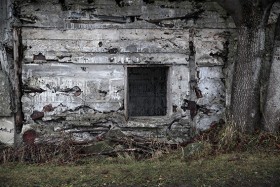


DOKLeipzig 2014/ 4/ Dok.Incubator
Czech Andrea Prenghyova, the founder of DOK.Incubator, was on stage to welcome the participants to the presentation of the 2014 film projects that had been developed during half a year with the help of Claas Danielsen and Ilo von Seckendorff from DOKLeipzig and a gallery of tutors – producers and editors and distributors – led by Danish Sigrid Dyekjær.
A clip from the press release from the website of DokIncubator: ”For the first time, the nine extraordinary feature-length documentary films were presented to over 180 the decision-makers of the international industry at the ceremonial atmosphere of the Leipziger Kabaret Pfeffermühle. The DOK.Incubator Workshop 2014 ends with a confirmed premiere of three of the films at the biggest documentary film festival at IDFA: Always Together /CZ/ as a story of a dream of an ideal family life that just went too far; Drifter /HU, DE/ an intimate portrait of a young rebel in desperate need of a lacking, supportive father and Queen of Silence /PL, DE/ – a documusical starring a deaf girl from an illegal Roma settlement, who escapes the reality into the Bollywood world…”
The creative idea of the organisers is to bring in film projects that are in or close to a rough cut stage and have them profit from comments from colleagues and so-called experts. And – at this final session – pitch their projects to (in this case) decision-makers from festivals, distribution side and television. In the pitch several of the nine called for sales agents, and there were many of them in the room. The idea of having the filmmakers make a verbal presentation, show a trailer and one or two scenes worked well and there are very promising films coming up: The three mentioned above and the Italian called ”Between Sisters” – go to the website where you can also watch the trailers.
The third edition of a well thought and developed training programme – if I may lift one little finger: Please play down the self-praise a bit, some of the project presentations by the tutors were overcooked marketing, if that still exist… more sobriety, please. Photo from a previous Dok.Incubator session.
